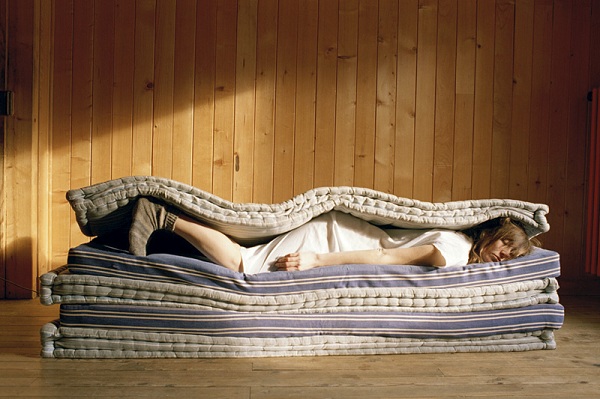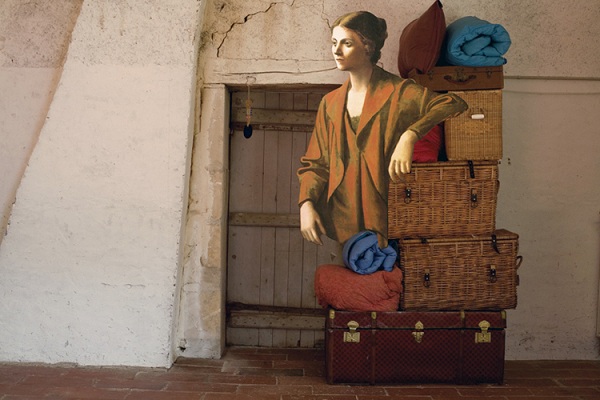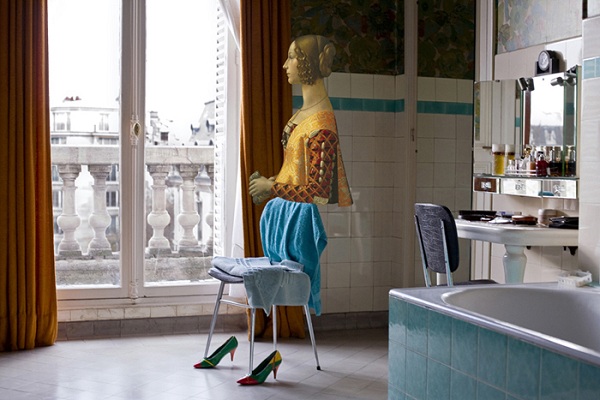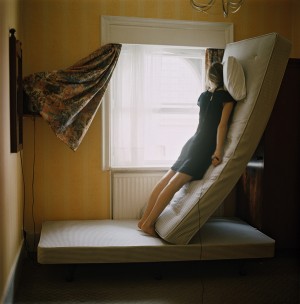Artist of the Week 10/24-10/30: Elene Usdin and Her Visual Language
GALO: Which series has been your most difficult to shoot and why?
EU: I created a series called The Shadow Switch; it was a personal project. I managed to gather a team, a stylist, models, and a studio, and I made a whole set of cardboard decor. On the day of shooting, everything went from bad to worse. While I was loading the equipment into the taxi, my son locked the house with the keys still inside. I broke in to recover the rest of the material, and left everything in disarray to get to the studio. On site, the flash didn’t work and the model did not fit into the clothes, so the agency brought a new model, but it didn’t work as I’d imagined it.
GALO: Can you tell me about the technology used in the interior and the Women Chopin series. How is this type of aesthetic accomplished?
EU: This series was born by chance. I made installations of furniture in a house where I spent a weekend. When I edited these images, I had to prepare an exhibition in a gallery in Paris, which had already been exhibiting an illustrator. The idea then came to me to mix the two techniques: photography and painting, sticking very well-known historical portraits in contemporary places. The series was then presented not as a collage, but as a digital photo on which I painted the same classic portraits. Subsequently, the magazine Telerama offered me the chance to produce a theme of Chopin, then Casanova.

A photograph from the “Self-Portrait with Mattress” series. Photo Courtesy of: Elene Usdin.
GALO: What fascinated you about the mattresses in your Self-Portrait with Mattress series as well as the Hot Summer Night series? You seem to apply a similar idea of curling the body into objects.
EU: The series of self-portrait mattresses was born by chance during holiday in a chalet in the Alps with friends. I was curious to disassemble the small dormitory beds in the house, especially because the mattresses were identical. The idea of wrapping myself up, as though the mattresses were armor, amused me. Then Twill, an Italian magazine, commissioned a reinterpretation using a model for this series of mattresses. Every time I travel, I have my camera with me, and I love to see boneless bed mattresses, so subsequently, there is also a series at the hotel in London.
GALO: In light of the apparent variety of your work, what would you say are the recurring elements that characterize your photographs?
EU: I imagine the characters for my photos are from my dreams or nightmares. Often, I like the models of my pictures sleeping, as if the action was stopped and the energy was happening elsewhere in their mind, in their dreams. My images are a way out of my anxieties and some fantasies too.

A photo from the “Women Indoor” series. Photo Courtesy of: Elene Usdin.
GALO: What is your interest in fashion photography? Do you consider your fashion photography to be “alternative?”
EU: My interest is in how teamwork with a stylist and models is elaborated as an idea for any project, but knowing that there will be some clothes that I would not have thought to be the choice of the designer. My fashion series are unique in that they are designed as projects to tell a story. My aestheticism is a mixture of play, diversion, and creation of objects of accessories installed in a location where you want to tell a story. This is an aestheticism which refers me to the surrealists.
GALO: Your photos exclusively feature women. What is your interest in women in particular as the subject of your art?
EU: I do not know precisely. I started self-portraits for convenience. I think I’m attracted by the grace and beauty of women and their fragility.

A photo from the “Women Indoor” series. Photo Courtesy of: Elene Usdin.
GALO: Why are your photographs of New York in black and white? They are your only series that is not in color. And do you have a preference between shooting in a studio or shooting outdoors?
EU: This series was made during a trip with my son. When I travel, I take black and white film, and I like how black and white [photos] transport you to confront reality. It is a way to impose a personal point of view, framing, and consider light, not color. It allows me to work my intervention.
I love shooting outdoors, in the countryside, in homes that have a soul. I like to move furniture; I love poetry and secret places. I also like when we go as a team over several days outside, it’s [those] moods and moments that I love to share between work and fun.


